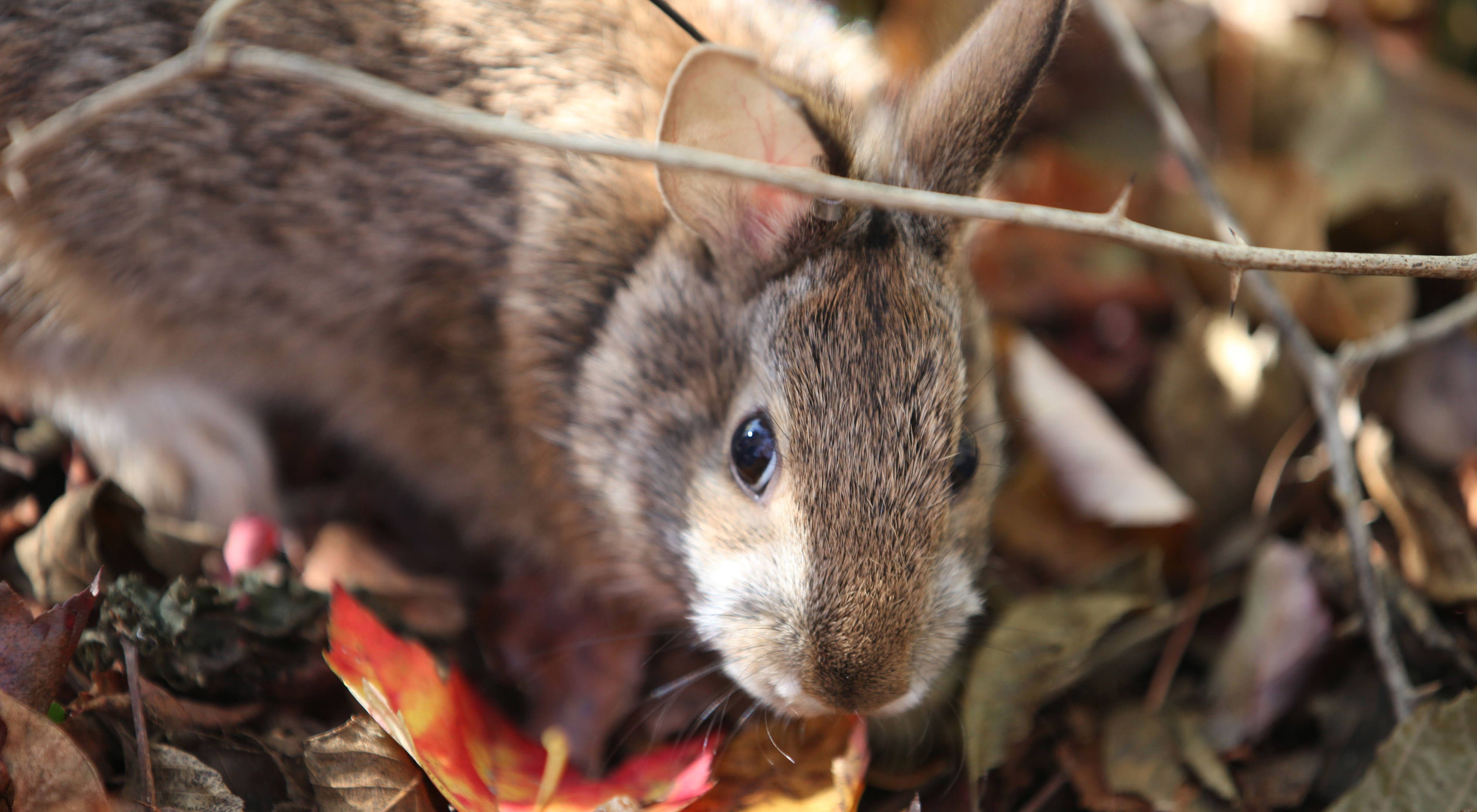
Fall is one of the most beautiful times of the year at Sunny Valley. Whether you’re enjoying a stroll on one of the many trails or watching the kids enjoy a hay ride at Open Farm day, the crisp air and colorful leaves provide an energy that’s inspiring. The work at Sunny Valley doesn’t end after the leaves turn. We’re getting ready to take the next steps on an ambitious, long-term project in Bridgewater at Wewaka Brook Farm and Natural Area. We’re creating habitat that mimics the early stages of New England forest growth, called early successional habitat.
Where we've been
In Bridgewater, While we love watching New England forests mature, many species native to Connecticut rely on new growth, or a forest in succession. The New England cottontail is one of them.
These areas typically look like thick patches of brush filled with young growth. it provides woody browse during winter and cover from predators throughout the year. For the New England cottontail predation is the main threat to their population. Predation increases when these rabbits have to travel looking for this type of cover.
We’ve looked for ways to take on this challenge for several years. Based on experience doing similar projects around New England, we knew this would be both labor and capital intensive. But in 2015, thanks to a generous gift from Judy Black and Richard Schlosberg, we were able to move this project from concept to reality.
Judy and Richard have been friends of the Nature Conservancy for years. In recognition of their contributions to Sunny Valley and across the state, a two-mile trail will be created in their names along with a gazebo-style reflection shelter with seating, maps and plaques.
Where we are now
The New England cottontail, formerly listed as a federally threatened species, is making a tentative recovery thanks to conservation efforts like this. Though it has been removed from the federal list, our work here is designed to ensure the population remains stable.
Other species that will benefit from this project include the American woodcock, Eastern towhee and many other birds and mammals that depend on shrub lands. In total, 47 species that call Wewaka Brook home have been classified as “Greatest Conservation Need” by the Conservancy. Once completed, this project will make a significant contribution to the legacy of conservation in Bridgewater.
Where we're going
So, what’s next? We’ve begun treating invasive species growing in the understory of the forest and we will continue to do so as needed throughout the project. This winter, our contractors will conduct the first ecological cut at Wewaka Brook. About 10 acres of trees will be removed to make room for the new habitat. The parcel was carefully chosen to lessen the environmental impact of the cut, and to create habitat in a preferred location for the New England cottontail. The trees removed will be sustainably processed.
We’ve also hired interns who will work side by side with Conservancy staff to complete the on-the-ground portions of the project. The lessons learned in the internship will supplement their environmental education and prepare the next generation of conservationists to replicate this type of work across Connecticut.
I’m proud of The Nature Conservancy, Judy Black & Richard Schlosberg, the Town of Bridgewater and everyone else who’s had a hand in this project. In many ways, this project represents the kind of vision we need to be able to successfully take on many of our worlds challenges. At Sunny Valley, we’re doing our part to keep our promise to nature.
Wayne Woodard
Sunny Valley Preserve Director
